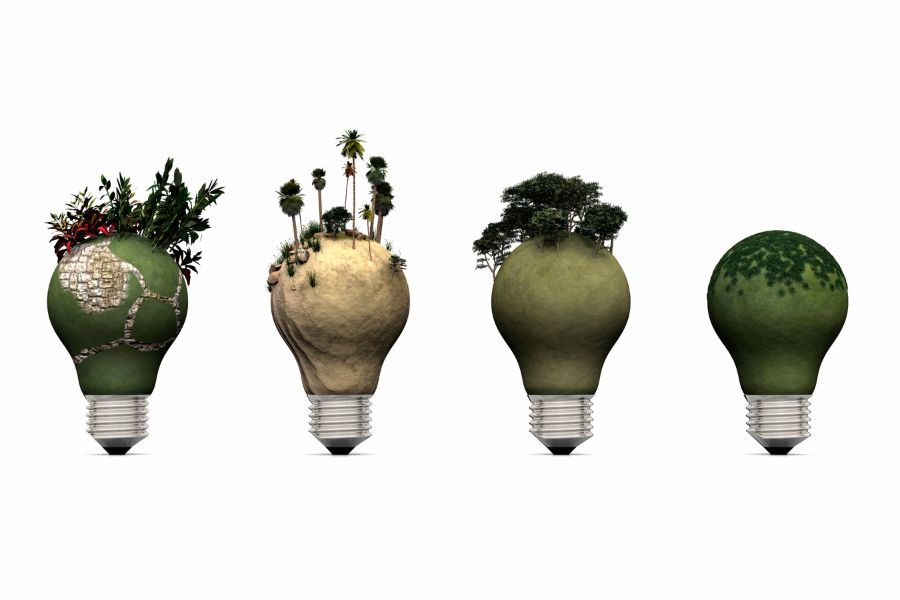Carbon emissions receive a great deal of attention in conversations about ESG and sustainable investing, and rightfully so. Climate change—caused by CO2 (and methane) emissions that are generated directly or indirectly by human activity—is now having economic and humanitarian consequences that range from dire to catastrophic.
But this focus on CO2 emissions can unintentionally downplay other critical aspects of the “E” pillar of ESG that also affect the stability of economies and societies. Many of these other components under the “Environmental” umbrella are in the category of “natural capital”, things that keep the world’s ecosystems in balance but that most of us take for granted.
Natural Capital Under Threat
Take a moment to think about the synergies and interconnectedness of the earth’s natural capital. Plants take in the CO2 that all animals exhale, convert it into food for animals to eat, and “exhale” the oxygen animals breathe. Plants, especially forests, also store CO2. Oceans, another huge form of natural capital (both in physical size and impact), also absorb a great deal of CO2—as much as 25% to 30% of human-produced atmospheric carbon, according to this article in Science—which helps to keep things in balance. But too much CO2 makes oceans too acidic, killing off marine life and reducing biodiversity, which diminishes their capacity to absorb that CO2.
While industrialized societies’ carbon emissions are clearly a big threat to the earth’s natural capital, there are other sources to consider. For example, mangrove forests stabilize shorelines and prevent land erosion, and maintain water quality by filtering pollutants and trapping sediment. They are being destroyed on a massive scale by extensive (inefficient) shrimp farming in Indonesia and elsewhere, threatening coastal ecosystems.
And let’s not forget that we need fresh water to drink. Soil, another asset on the natural capital balance sheet, is not just a place to plant a garden or build a building; it is also a giant water filtration system. When we use up land indiscriminately and pave much of it over with concrete, we have to find other ways to produce clean water. That requires energy, which usually emits more CO2, and…well, we could keep going but you get the picture.
Invest in Natural Capital or More Costly Solutions?
It does not require a big leap to see there is a connection between the health of the world’s natural capital and how we should think about deploying financial capital. The earth provides us with natural carbon capture capabilities in the form of forests and oceans; we can spend capital to protect them, and to find ways to supplement them with new carbon capture technologies, or we can spend far more capital to try to shield ourselves from what will be an increasingly hot planet that is flooded in some areas and drought-stricken in others.
Since crops do not grow well in drought-stricken or flooded areas, we will have to come up with new ways to grow food, which will require both more land and more financial capital (although eating differently and reducing the global population are other options). Increased use of chemical fertilizer, which requires natural gas to make, degrades the soil and affects drinking water supplies.
Biodiversity is another form of natural capital, and its staggering decline is impacting another type of nature’s capital that we often overlook – bees, butterflies, beetles, and other natural pollinators. Without pollination, we can’t grow crops. If we do not invest our capital to stop biodiversity loss, we will have to invest in developing artificial methods of replacing the natural pollinators we are destroying.
Natural Capital and the Food Industry
The threat to pollination is only one of the ways the food industry is vulnerable to a loss of natural capital and has a tremendous impact on those resources. Industrial-scale agriculture has greatly reduced famine and hunger around the world and supplies a seemingly limitless array of foods for billions of consumers. But industrialized farming as currently practiced is unsustainable. Modern farms make heavy use of pesticides that reduce biodiversity, and often grow just one type of crop over huge areas while tilling the soil deeply. This depletes soil fertility, leading to deforestation to clear more land for new farmland, which destroys both natural habitats and carbon sinks. The Amazon basin is the best known and most grievous example of how a huge carbon sink is being transformed into a source of CO2 emissions.
Sustainable investing can make a difference in slowing or even reversing the grim trend of destruction seen in the world’s natural capital. Many investors and investment managers are supporting that effort – not because it “feels good”, but because it makes financial sense. For example, MFS Investment Management recently published a thoughtful and thought-provoking piece that describes how they seek to identify high-risk commodities and understand their impacts on natural capital, map supply chains that use those commodities and place stress on resources where consumption occurs, and evaluate companies’ exposure to those high-risk commodities whose use negatively affects natural capital.
Bottom line
We can use up more and more human and financial capital trying to figure out ways to replicate and replace the essentials for life on earth that until recently, natural capital has been able to provide. Or, we can use our human and financial capital to try to restore the balance in the earth’s natural capital that we have, until recently, taken for granted.
OWL ESG is dedicated to providing data and insights to investors, asset managers, financial advisors, and corporations to help them understand various ESG exposures, risks and opportunities. For more information on what we can do for you, please contact us.




